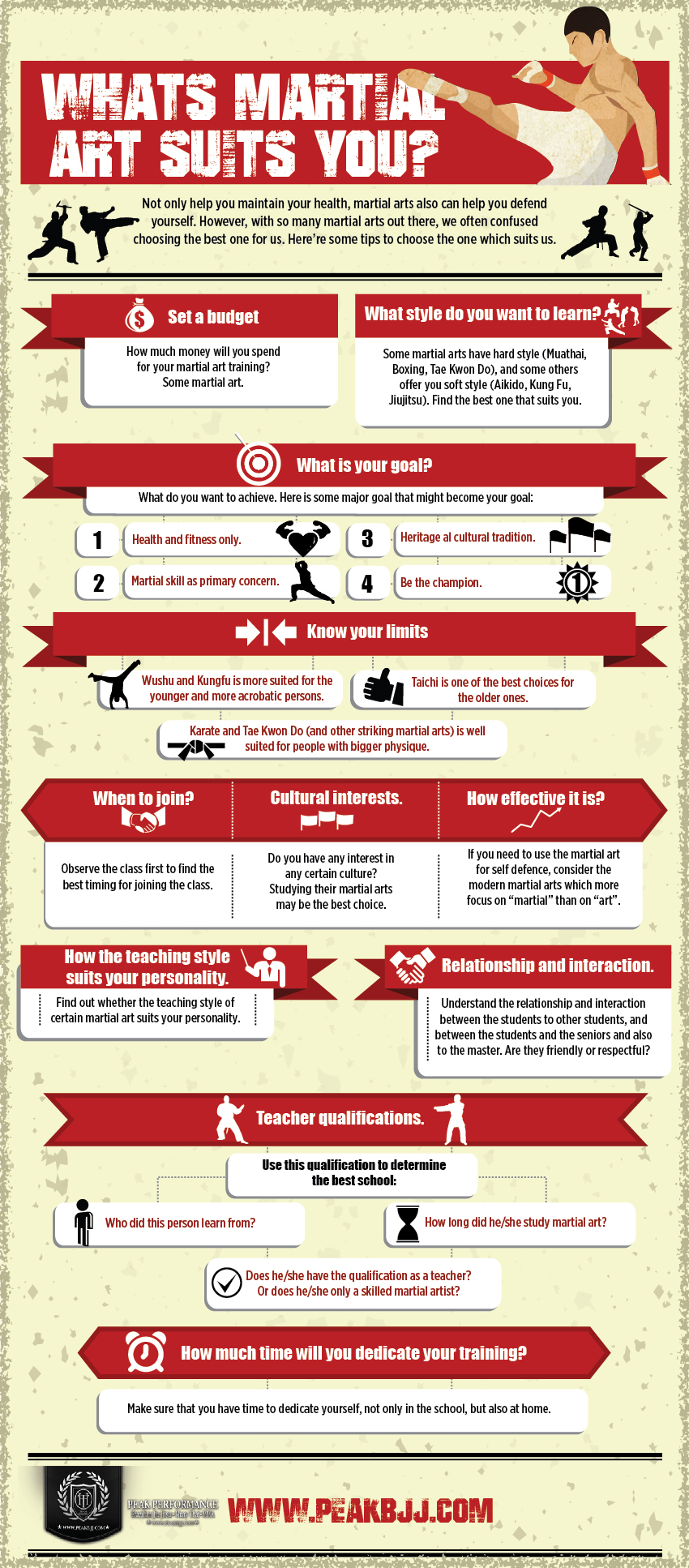The Chronicle And Development Of Martial Arts: An Evaluation Of Its Historic Origins And Advancement Right Into Modern Techniques
The Chronicle And Development Of Martial Arts: An Evaluation Of Its Historic Origins And Advancement Right Into Modern Techniques
Blog Article
Composed By-Delaney Whitaker
Enter the globe of martial arts, where ancient beginnings and contemporary techniques collide in an electrifying journey of technique and self-discovery.
As you look into the history and evolution of this fascinating art kind, prepare to be captivated by the cultural influences, technical innovations, and extensive philosophy that have actually formed it over centuries.
From the battlegrounds of ancient civilizations to the training grounds these days, martial arts have actually stood the test of time, continuously adapting and growing.
Each strike, each motion, lugs with it the weight of countless years of tradition and wisdom, passed down through generations. This is a tale of durability, of warriors who sought not just physical prowess, yet also inner strength and consistency.
Join juvenile crime attorney on this remarkable exploration as we uncover the tricks, the tales, and the transformational power of martial arts.
Prepare yourself to be inspired, challenged, and forever altered by the background and advancement of martial arts.
Cultural Influences on Martial Arts
As you discover the background and evolution of martial arts, you'll rapidly discover the remarkable ways in which cultural influences have shaped these fight strategies.
From top federal defense attorney of China and India to the more current growths in Japan and Brazil, martial arts have actually been heavily influenced by the societies in which they stemmed.
For instance, Chinese martial arts, such as Martial Art and Tai Chi, are deeply rooted in the philosophy of Taoism and the concept of Yin and Yang.
In contrast, Japanese martial arts, like Martial arts and Judo, show the samurai warrior practices and the values of self-control and honor.
Likewise, Brazilian fighting style, Capoeira, incorporates aspects of African dance and songs, mirroring the cultural heritage of African slaves in Brazil.
These cultural influences not only offer each martial art its unique qualities yet additionally provide a much deeper understanding of the historical and social contexts in which they advanced.
Technological Innovations and Martial Arts
With the surge of sophisticated weapons and innovative training devices, you've been able to boost your skills and adapt to the ever-changing combat landscape.
Technological developments have changed the method martial arts are exercised and shown. Virtual reality simulations now permit you to learn realistic battle circumstances without the threat of physical harm. High-speed electronic cameras capture every action, enabling you to assess and ideal your methods. Wearable gadgets monitor your heart rate, breathing, and muscle mass activation, supplying instantaneous comments on your efficiency.
In addition, the growth of specialized tools, such as resistance bands and dexterity ladders, has enabled you to enhance your rate, toughness, and dexterity. These technical advancements have not just made training extra reliable yet have likewise pushed the boundaries of what is feasible in martial arts, enabling you to get to new elevations in your technique.
The Ideology and Principles of Martial Arts
The ideology and principles of martial arts are deeply rooted fit your state of mind and instilling discipline, emphasis, and regard in your method.
1. Frame of mind: Martial Arts shows you to develop a strong and resistant way of thinking. It enables you to get rid of difficulties both on and off the mat, pressing your limitations and being determined in the face of adversity.
2. Discipline: Martial Arts demands discipline and self-constraint. With find more information and adherence to stringent regulations and strategies, you learn to control your impulses and create a solid work ethic.
3. Focus: Martial Arts needs intense focus and focus. By training your mind to be existing in the moment, you enhance your ability to respond quickly and efficiently throughout battle scenarios.
4. Respect: Martial Arts emphasizes respect for oneself, instructors, training companions, and challengers. It educates you to value the abilities and experiences of others, fostering a sense of sociability and gamesmanship.
Conclusion
Congratulations on finishing your trip through the captivating globe of martial arts! Throughout this expedition, you have seen the abundant history and amazing evolution of these fight methods.
From their old beginnings to the modern strategies we see today, martial arts have been shaped by cultural influences.
The combination of innovation has actually likewise played a substantial function in changing the method martial arts are taught and practiced in the present day.
However, it is important to remember that martial arts are more than simply physical combat. They encompass profound ideologies and directing principles that go beyond the simple act of battling.
Take a moment to reflect on this obsolete journey and appreciate how the tradition of martial arts remains to flourish in the here and now, transcending time and borders.
